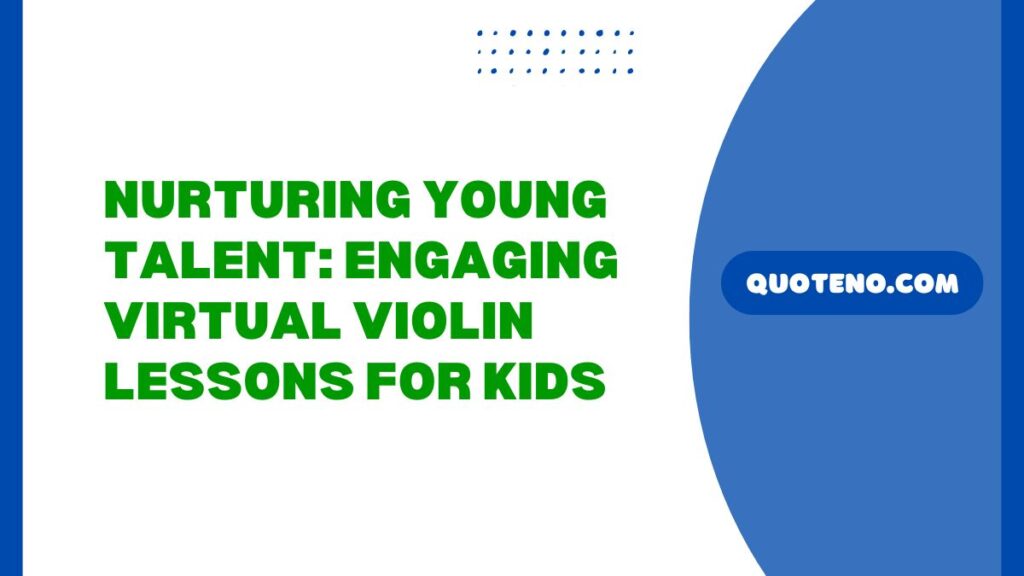Key Takeaways:
- The evolving role of technology in personalized violin instruction for children.
- The core advantages of virtual violin lessons include flexibility and accessibility.
- Indicators of effective online violin teaching programs.
- Proven strategies for ensuring interactive and captivating online violin sessions.
Table of Contents
Embracing Technology in Music Education
Music education rapidly evolves in this digital era, with technological advances offering a new canvas for instructional creativity. A prime example of this shift is the rise of the virtual violin teacher. This professional operates within the cyberspace classroom, utilizing the vast array of digital tools to enhance the music learning process. With the integration of high-resolution video calls, cloud-based music sheets, and instant feedback mechanisms, virtual learning platforms offer a robust framework for delivering comprehensive violin instruction.
Comparing virtual lessons to the conventional music classroom, one might argue that the immediacy and variety of these digital tools provide a more engaging experience. Physical limitations no longer bind teachers; they can demonstrate techniques from different angles, share interactive music theory apps as they teach, and even slow down or speed up musical pieces to match a student’s ability level.
As online platforms become increasingly sophisticated, so does the capacity for teachers to deliver tailored and nuanced music education that can respond in real-time to the needs of their students.
The Benefits of Virtual Violin Lessons
The digital space has paved the way for many unconventional learning methods, among which virtual violin lessons stand out as a beacon of modern educational convenience. The format removes the logistics of geographical proximity, making high-quality music education available to those previously hindered by location or limited local resources.
Aspiring young violinists can now receive guidance from esteemed instructors such as from the Forbes Music Company, fostering a learning community that knows no bounds.
The intimacy of this educational approach cements a potent bond between teacher and student, often enhancing the student’s ability to perform. Amplified by convenience, this engagement allows students to immerse themselves in a musical journey adaptable to their personal life and pace, providing them with control over their musical narrative.
Essential Components of a Successful Online Violin Program
An effective online violin program is more than just a compilation of tutorial videos; it is a finely tuned symphony of interrelated components that creates a fulfilling educational experience.
At its heart is the curriculum, which must be comprehensive and adaptable, allowing students to progress appropriately. Certified instructors, skilled in their art and proficient in teaching through an online medium, are the musicians conducting this educational symphony. Their personalized teaching styles, when combined with the flexibility of the virtual format, permit a level of individual attention often unfeasible in a traditional classroom setting.
No virtuoso performance is complete without the proper accouterments. In the context of virtual violin programs, these digital resources and tools are available to students. The convenience of downloadable exercises, sight-reading materials, and theory games contribute to students’ ability to hone their skills outside of lesson time. These supplementary materials are indispensable in creating an environment that encourages consistent practice and exploration of the violin.
Engaging Young Minds: Strategies for Keeping Lessons Interactive
The cornerstone of a successful virtual violin lesson lies in its interactivity and the teacher’s ability to captivate the student’s mind. Music educators employ various inventive methods to keep their online lessons as engaging as an in-person experience. Gamified learning modules incorporating points, badges, and leaderboards convert technical exercises into fun challenges that captivate young musicians’ attention. Similarly, including story-driven projects in which students compose a narrative through their music adds an extra layer of engagement.
Mastery of the violin requires practice, yet unvarying repetition can lead to waning interest. An interactive lesson might involve the teacher weaving software-generated accompaniments into the session, making rehearsing a particular piece more like a collaborative exercise than solitary drill work. The virtual sphere permits real-time adjustments and feedback, ensuring that each practice moment is maximized for the student’s betterment and enjoyment.
Collaborative elements also play a key role, and platforms that allow for ensemble playing or joint assignments can replicate the communal aspects of traditional music education. From interactive online concerts to creative music-making tasks with classmates, these experiences reward the student with much more than technical proficiency; they provide an enriched, holistic perspective of what it means to be part of the artistic community.
- Divorce Annulments Demystified: Facts, Misconceptions, and What to Know - December 8, 2025
- Setting Healthy Boundaries for Better Mental Wellness - November 20, 2025
- Creative Ways to Make Camping Trips Fun for Everyone - November 7, 2025

